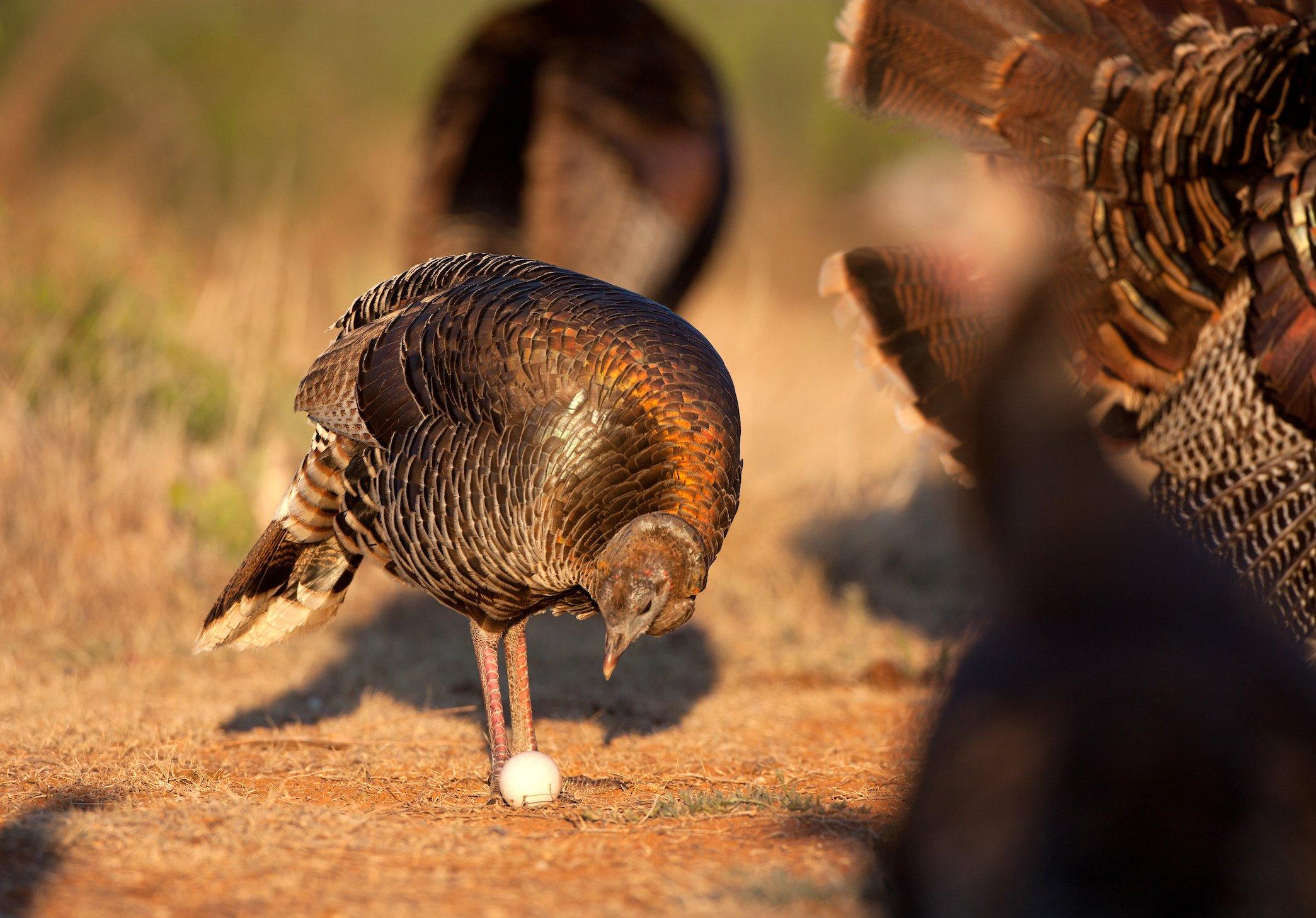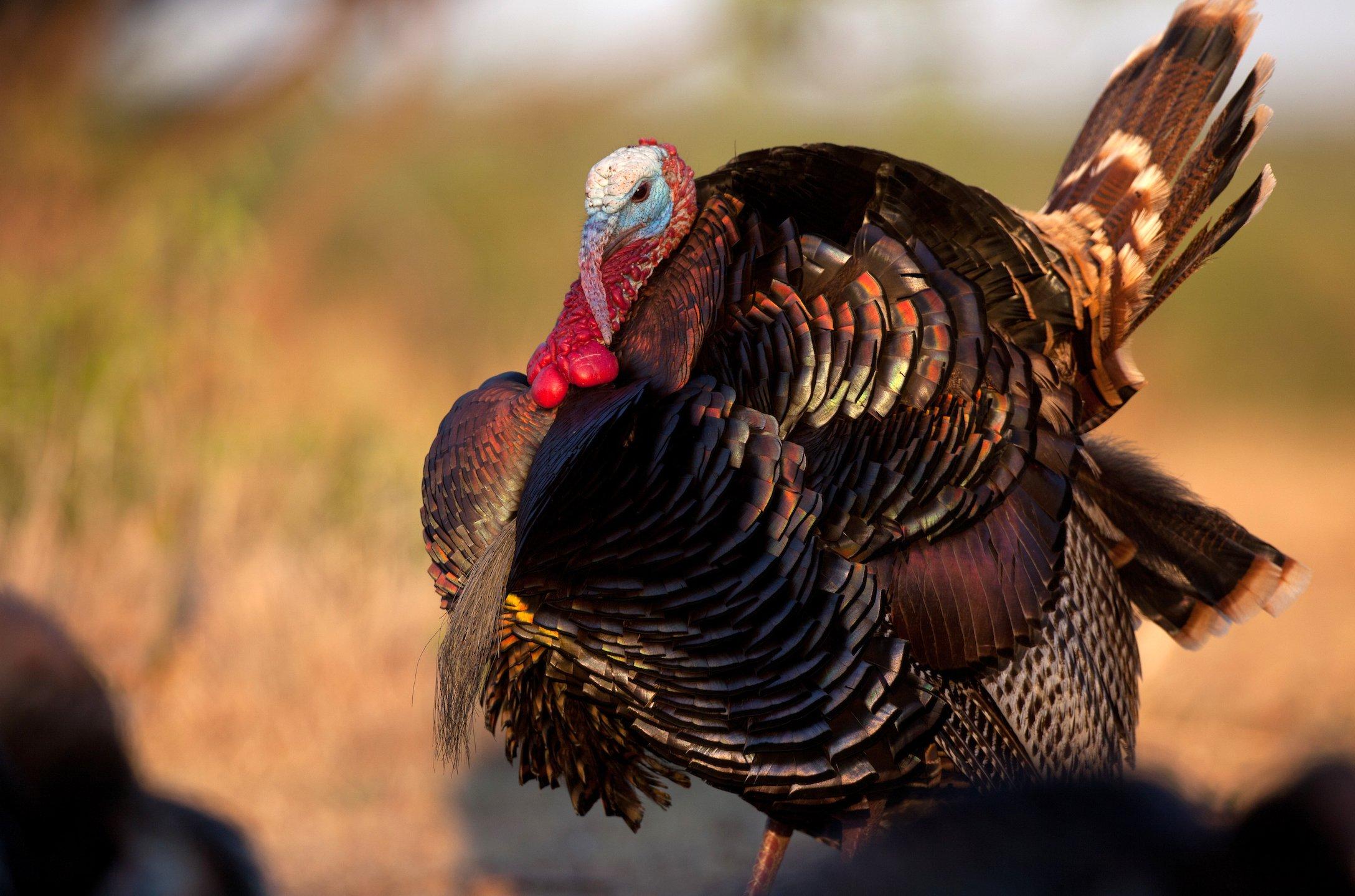IS IT TOO LATE TO SAVE THE WILD TURKEY?
IS IT TOO LATE TO SAVE THE WILD TURKEY?
Will we ever see a return to the population peaks of the early 2000s, or are turkey numbers destined to decline?
When the first Europeans set foot on this continent, wild turkeys were everywhere. Some researchers put the levels at as many as 10 million birds. Over the next 400 years, those numbers crashed, and by the early 1900s, wild turkeys had been reduced to a few small pockets hanging on in hard-to-reach locations. By 1920, the wild turkey had disappeared completely from 18 of the 39 states they had originally occupied. Overall population numbers dropped to an estimated 50,000 or fewer birds.
Wild turkeys thrived on the continent when the first Europeans arrived. Image by Russell Graves
Luckily, sportsmen's groups and game managers took notice, and wide scale population restorations began. Starting in the 1930s, state game departments realized the difficulty of live trapping the few existing turkey populations for transplanting into other areas. Their answer was to hatch and raise them under controlled conditions. They would take wild or a mix of wild and domestic stock and hatch the birds, then release them in the wild. The program was a colossal failure. None of the hatched and transplanted populations thrived or even maintained population numbers.
Interestingly, game agencies noticed that some of the remaining wild populations were beginning to expand on their own. What happened to help wild turkeys? The Great Depression. Thousands of acres of farmland were abandoned, growing up into prime turkey habitat.
By the 1950s, biologists and game agencies were honing methods that allowed them to capture existing wild turkeys. In 1951, hunter and wildlife biologist Herman Holbrook became the first person to catch wild turkeys successfully using a cannon-fired net originally designed to capture waterfowl. By 1957, Holbrook had used the cannon net to capture 241 eastern wild turkeys, releasing the birds in eight major locations in South Carolina. At least four of these releases resulted in successful reproduction, and South Carolina wild turkey populations were set on the road to recovery.

Wild turkey numbers plummeted around the turn of the century nearly to the point of no return. Image by John Hefner
Those early restoration efforts expanded across the country. By the late 1990s and early 2000s, viable wild turkey populations existed in 49 states, as well as parts of Canada and Mexico. Population numbers were nearing historical levels with an estimated 7 million birds. It was one of the most remarkable wildlife restorations in the nation's history. Hunters enjoyed successful seasons, bag limits and season lengths increased, and everything seamed to be nearly perfect in the world of wild turkeys.
But it wasn't. Hunters soon began to notice bird numbers drop. Starting in the southeastern U.S., reports of quiet springs and falling harvests began to get the attention of biologists and state game agencies.

The wild turkey restoration reached its peak across much of the country in the late 1990's and early 2000's. Image by Russell Graves
Why are turkey populations falling? Biologists point to a number of reasons, including habitat loss, predation, and disease. One noticeable and concerning trend is a drop in poult production each spring for the past decade or so. Studies have shown that to keep a population stable, hens need to produce an average of at least two surviving poults per nesting. More than two and population numbers increase; less than two, and populations fall. In parts of the southern U.S., we are well under two, with some of the hardest hit areas hovering around one or even less, said Mark Hatfield, wildlife biologist and Director of Conservation Services for the National Wild Turkey Federation.
Populations are falling to the point that some states are reducing harvest numbers and shortening season lengths. Wild turkey biologists are scrambling to research issues and figure out population declines.
This leads to the question: Is it too late to save the wild turkey? Noted turkey researchers Dr. Michael Chamberlain and Dr. Bret Collier started their discussion on the state of wild turkey science at the National Wild Turkey Federation's recent Convention with this very question.
The answer is complicated. Should we expect the booming population of the '90s and early 2000s to return? Not likely, since habitat degradation and urban sprawl will probably limit population growth in many traditional turkey strongholds. In my opinion, our goal needs to be sustainability and understanding that we're not going back to the levels observed in the 1990s in most areas. But, if we can maintain populations at levels that ensure hunter satisfaction, coupled with no further declines, then we could work toward improving populations. Obviously, further declines are not what any of us want to see, Chamberlain said.
As noted, the issues facing wild turkeys are many. And what might be the chief concern in one area might not be a big deal in another. The factors influencing turkey populations are complex and interact differently from one local area to another. However, research suggests that habitat loss and degradation, predation, disease, and harvest are the primary drivers across the landscape. Beyond those, there are many factors that may be influencing populations in some areas that are not in others. This complexity speaks to the need for continuing research to understand the threats facing populations, Chamberlain said.
Prioritizing wild turkeys to private landowners is the key to ensuring we have turkeys to hunt in the future.
Since most wild turkeys live on private land, hunters and landowners are key to providing the best possible habitat to provide turkeys the opportunities they need to thrive. Chamberlain says prioritizing wild turkeys to private landowners is the key to ensuring we have turkeys to hunt in the future. If we all could identify a single piece of property that we could influence, regardless of how large or small that property is, and take what is known about improving habitat for turkeys to improve that property, we could move the needle. Most of us don't own property, but perhaps we know someone that does, and we could take the science and help that person improve even a single aspect of their property for turkeys. In so doing, we'd see positive changes across the landscape, and that's what it's going to take to ensure the next generation can enjoy hunting turkeys as we have.
In some areas, maintaining population levels might mean shorter hunting seasons or reduced bag limits. Chamberlain said, What we're seeing as populations decline is agencies trying to control the one thing they can at a statewide level. They're making changes to harvest through shorter seasons, reduced bag limits, reductions in non-resident opportunities, etc. I suspect you'll continue to see agencies make these changes, understanding they're trying to thread a needle to maintain hunter satisfaction and ensure sustainable harvest moving forward.
Luckily for turkey hunters, the short answer to the question of Is it too late? is no. Chamberlain says the answers to stopping wild turkey population declines lie with all of us. We simply have to work together to address the issues facing turkeys, understanding that every turkey hunter wants the same thing … that is, we want to be able to hunt turkeys and enjoy them. We all have different perspectives, but with a common goal, we all share the same fabric — and that centers on our love for the bird. We've faced challenges with wild turkeys before, and we addressed those challenges through cooperation from hunters, agencies, non-profits, landowners, and turkey enthusiasts to restore wild turkeys. We can face the challenges of today if we focus on that same level of cooperation.
Populations are falling to the point that some states are reducing harvest numbers and shortening season lengths. Wild turkey biologists are scrambling to research issues and figure out population declines.
This leads to the question: Is it too late to save the wild turkey? Noted turkey researchers Dr. Michael Chamberlain and Dr. Bret Collier started their discussion on the state of wild turkey science at the National Wild Turkey Federation's recent Convention with this very question.
The answer is complicated. Should we expect the booming population of the '90s and early 2000s to return? Not likely, since habitat degradation and urban sprawl will probably limit population growth in many traditional turkey strongholds. In my opinion, our goal needs to be sustainability and understanding that we're not going back to the levels observed in the 1990s in most areas. But, if we can maintain populations at levels that ensure hunter satisfaction, coupled with no further declines, then we could work toward improving populations. Obviously, further declines are not what any of us want to see, Chamberlain said.
As noted, the issues facing wild turkeys are many. And what might be the chief concern in one area might not be a big deal in another. The factors influencing turkey populations are complex and interact differently from one local area to another. However, research suggests that habitat loss and degradation, predation, disease, and harvest are the primary drivers across the landscape. Beyond those, there are many factors that may be influencing populations in some areas that are not in others. This complexity speaks to the need for continuing research to understand the threats facing populations, Chamberlain said.
Prioritizing wild turkeys to private landowners is the key to ensuring we have turkeys to hunt in the future.
Since most wild turkeys live on private land, hunters and landowners are key to providing the best possible habitat to provide turkeys the opportunities they need to thrive. Chamberlain says prioritizing wild turkeys to private landowners is the key to ensuring we have turkeys to hunt in the future. If we all could identify a single piece of property that we could influence, regardless of how large or small that property is, and take what is known about improving habitat for turkeys to improve that property, we could move the needle. Most of us don't own property, but perhaps we know someone that does, and we could take the science and help that person improve even a single aspect of their property for turkeys. In so doing, we'd see positive changes across the landscape, and that's what it's going to take to ensure the next generation can enjoy hunting turkeys as we have.
In some areas, maintaining population levels might mean shorter hunting seasons or reduced bag limits. Chamberlain said, What we're seeing as populations decline is agencies trying to control the one thing they can at a statewide level. They're making changes to harvest through shorter seasons, reduced bag limits, reductions in non-resident opportunities, etc. I suspect you'll continue to see agencies make these changes, understanding they're trying to thread a needle to maintain hunter satisfaction and ensure sustainable harvest moving forward.
Luckily for turkey hunters, the short answer to the question of Is it too late? is no. Chamberlain says the answers to stopping wild turkey population declines lie with all of us. We simply have to work together to address the issues facing turkeys, understanding that every turkey hunter wants the same thing … that is, we want to be able to hunt turkeys and enjoy them. We all have different perspectives, but with a common goal, we all share the same fabric — and that centers on our love for the bird. We've faced challenges with wild turkeys before, and we addressed those challenges through cooperation from hunters, agencies, non-profits, landowners, and turkey enthusiasts to restore wild turkeys. We can face the challenges of today if we focus on that same level of cooperation.
Will we ever see a return to the population peaks of the early 2000s, or are turkey numbers destined to decline?

